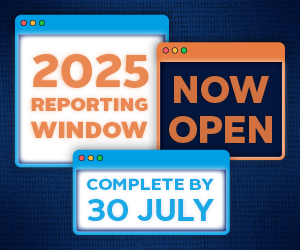Case study by AXA Group
| Author | Florence Roche, Credit Research Manager on Non-Financials; Stéphane Le Priol, Head of Credit Research; and Amandine Soulier, Corporate Responsibility |
|---|---|
|
Market participant |
Asset Owner |
|
Total AUM |
€587 billion (as at June 2018) |
|
FI AUM |
€411 billion (as at June 2018) |
|
Operating country |
Global |
Action areas:
- Time horizons
- Organisational approach
- Transparency and communication
The investment approach
AXA Group defines responsible investment as the integration of ESG considerations into its investment processes. We believe ESG integration may impact long-term investment performance by offering an enhanced understanding of risk drivers. This conviction is derived from academic research and empirical market data. It also helps us to align our investments and broader corporate responsibility commitments. The process of ESG integration is coordinated centrally by the group credit research team, which assigns an internal credit rating (ICR) and manages issuer eligibility. ICRs assigned by the team cover more than 80 percent (of amount invested) of AXA Group’s credit portfolio. Ratings from external CRAs are taken into account for the rest.
The investment process
When performing a credit review and assigning an ICR, the credit research team assesses several credit-relevant factors related to an issuer’s business and financial profiles (see below). The assessment is relative to a group of issuers within the same industry/geographical area. Each factor is assessed as strong, neutral or weak versus the company’s peers.

The ESG and transparency factor is not markedly different from the other credit factors we consider when forming a credit opinion and assigning an ICR. It too can be a key rating driver and in some cases an overriding factor. It should be noted that the credit research team does not conduct a full-fledged ESG analysis; rather, it assesses the materiality of ESG factors on an issuer’s creditworthiness. Analysts use ESG information from sources ranging from company reports to ESG data providers/NGOs (e.g. Carbon Disclosure Project for oil and gas) and specific industry sources (e.g. Evaluate for the pharmaceutical industry). Credit analysts try to evaluate how this information contributes to an issuer’s market position, revenues, profitability, capex and cash flow, etc.; each analyst evaluates which criteria are the most meaningful, observable and material by sector.
However, the ESG and transparency factor can differ from other factors in terms of its time horizon. Although it can be material within our usual rating horizon (around two years) and thus impact the ICR like any other factor, ESG and transparency risks can also have a longer time horizon before they materialise. In such cases, the ICR may not be impacted but the credit research team can take other actions such as proposing to stop investing or imposing maturity constraints. Those decisions are then implemented by asset managers investing on behalf of AXA Group.
The investment outcomes
This framework was introduced four years ago and is now fully integrated into our analytical and investment decision processes. As a result, we have stopped investing in several issuers and reduced the investable maturity of others.
One example is the independent pure-play exploration and production (E&P) industry. The pace of the energy transition – the shift towards a lower reliance on fossil fuel energy in favour of less carbon-intensive sources – is gaining momentum and influence on companies’ long-term strategies. The market consensus anticipates a peak in oil demand in the next 10 to 40 years. We believe that future regulation is likely to influence demand for and the pricing of hydrocarbons, and that there is a stranded asset risk for the independent E&P industry in the long term. While this has no impact on our ICR given the longer time horizon, we decided to cap the maximum investable maturity for this sector to 10 years.
Key takeaways
AXA Group is a long-term buy-and-hold investor but our ICRs (like ratings from external agencies) have a two to three-year horizon only. Introducing an ESG factor within our approach has made it possible for us to reconcile the difference in time horizon and to adjust our credit positioning accordingly.
Returning to the above example, capping our investment maturity will gradually reshape our credit exposure to independent E&P companies within a shorter time frame that will be easier to monitor. If or when tail risk increases, maturity constraints will be reviewed depending on industry developments, and we should be in a better position to minimise stranded asset risk.
Download the report
-

Shifting perceptions: ESG, credit risk and ratings: part 3 - from disconnects to action areas
January 2019
ESG, credit risk and ratings: part 3 - from disconnects to action areas
- 1
- 2
- 3
- 4
- 5
- 6
- 7
- 8
- 9
- 10
- 11
 Currently reading
Currently readingCase study: AXA Group
- 12
- 13
- 14
- 15
- 16
- 17
- 18
- 19
- 20
- 21
- 22
- 23
- 24
- 25


































